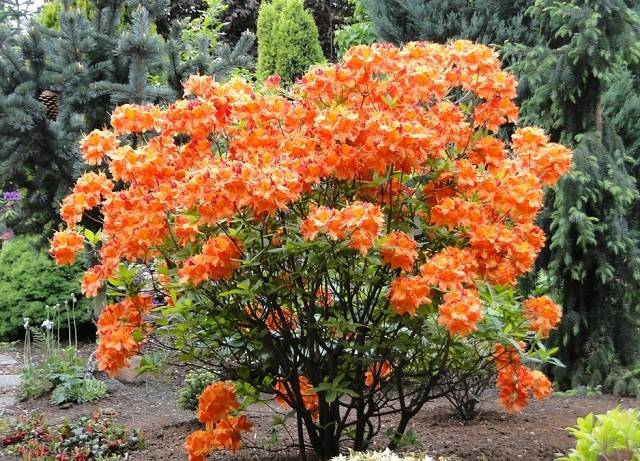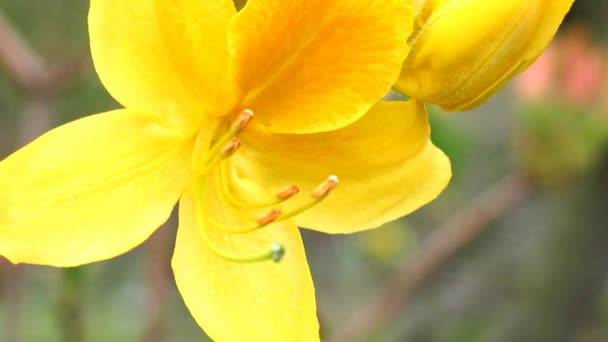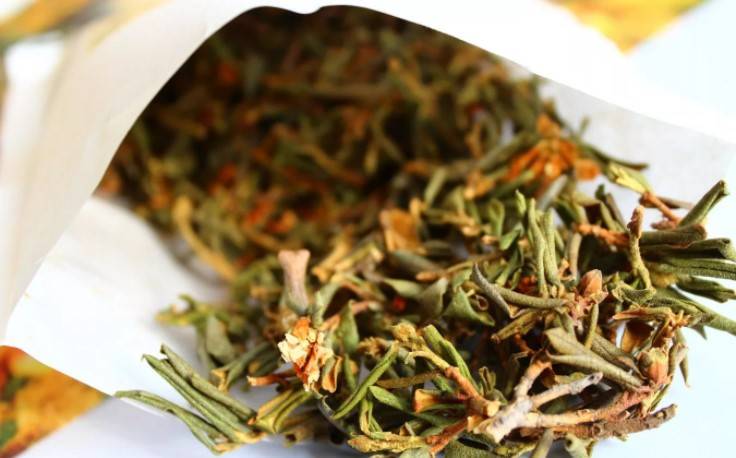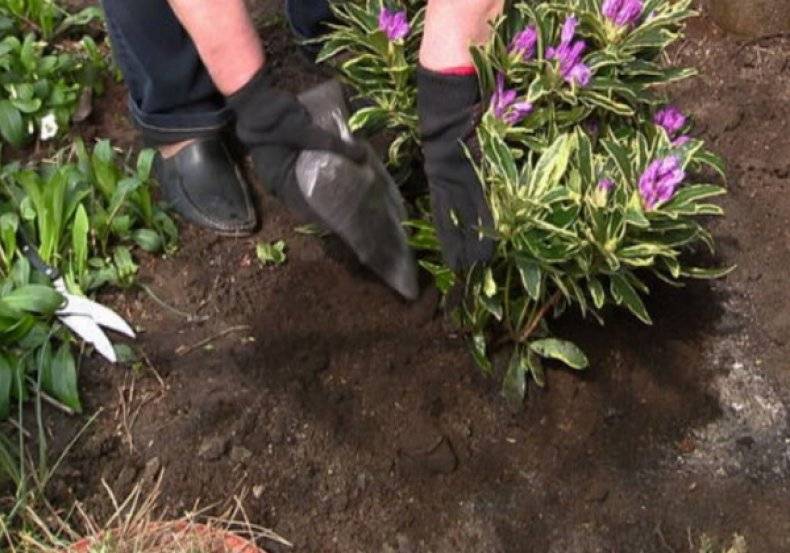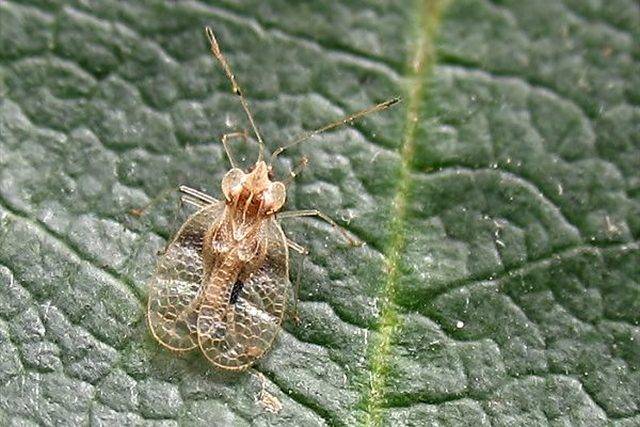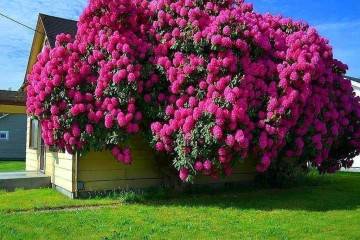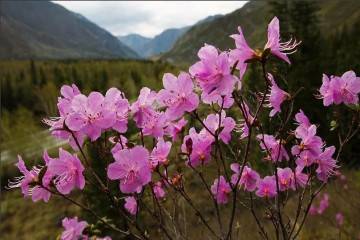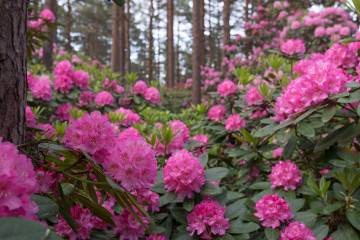Rhododendron yellow: deciduous, pontus azalea
Content:
Rhododendron yellow is a very effective decorative flower, a distant relative of the rose. With proper care and adherence to agrotechnical rules, this plant can be a wonderful decoration for a garden or a country house. In addition, this type of rhododendron is characterized by high adaptive abilities.
Botanical description
Another name for rhododendron is Pontic azalea, it was bred and began to be considered a cultivated plant at the end of the 18th century. At the same time, numerous hybrid varieties began to be developed. Later, Belgium joined in the cultivation of this flower. Rhododendron yellow was one of the first flowers of its kind to be cultivated. He is an original inhabitant of Europe and has long since moved from mountain meadows to the front gardens of city dwellers.
An elegant genus of rhododendron flowers belongs to the Heather family, which, in addition to Pontic azalea, includes about one and a half thousand species of this shrub.
One of the brightest representatives of yellow rhododendrons is the deciduous variety Gloving Embers, it is quite compact and slow-growing.
Also popular are varieties such as:
- Adonis - flowers are white in color and elliptical leaves, has been growing for more than 10 years;
- Raimund - late-flowering pink inflorescences have orange spots and a persistent strong odor;
- Sunta Nectarine looks like a golden ball with reddish tints, orange wavy petals.
Common botanical features of the rhododendron species are elliptical or lanceolate leaves that grow in bunches at the tops of the shoots. The inflorescences are lush, have a varied color from pink to red, from yellow to white with various shades and tints. Each flower resembles a bell up to 6 cm in diameter.
Rhododendron yellow is a low (up to 1.5 m) shrub, its width is up to a maximum of 6 m.Duration of flowering up to a crescent, begins in May and ends at 10 June.
Distribution and ecology
Judging by the first name, the Pontic azalea, the yellow rhododendron began its distribution from the shores of the Black Sea, because this is what it was called in Ancient Greece. However, the habitat of various azalea varieties is not limited to the Black Sea region. It is much broader and includes the Caucasus, Asia Minor, the Carpathians and the Alps.
Certain types of rhododendrons grow almost all over the world, but most of them are in China and Japan (more than 200 varieties).
The rhododendron is most difficult in areas with an arid steppe climate, such as the Astrakhan, Volgograd regions of Russia, Kalmykia. And where there is a frosty, but little snowy winter, this shrub, despite its frost resistance, will not grow at all.
What is the difference from other types of rhododendron
Florists have calculated that the total of rhododendron varieties exceeds 20 thousand and continues to increase due to breeding work.Most of them are thermophilic species that do not tolerate frosts very well.
Judging by the description, the yellow rhododendron cannot be considered the brightest or most spectacular representative of its species, but it has a distinctive feature that makes it very popular in Russia. This is its resistance to adverse external influences, so it can be grown almost everywhere - European regions, the Urals and the Trans-Urals, southern Siberia, the Far East. At the same time, the flower is so unpretentious that no care is required, it will cope on its own. For its successful growth and lush flowering, slightly acidic or neutral soil types are enough, as well as a little peat or heather soil.
How is it used in medicine
In addition to its decorative functions, yellow rhododendron and other varieties of this plant are used in many traditional medicine recipes. For example, they are very good at treating the following ailments:
- violation of heart rhythms and high blood pressure;
- vascular problems;
- rheumatism and other joint diseases;
- chronic colitis;
- vegetative neurosis;
- infertility and other female ailments (including erosion);
- migraine;
- dysentery.
Rhododendron decoctions are used for douching and as a diuretic, diaphoretic, and anesthetic. They wash infected wounds, rinse the mouth when treating stomatitis and tonsillitis. Alcohol tincture of rhododendron root cures infectious and bacterial diseases (due to the content of resins, essential oils and avicularin).
In Tibetan medicine, this plant is used as an excellent adaptation to the environment, since the flower contains a lot of flavonic, ursolic, oleanolic acids.
Growing conditions
Rhododendron yellow is a highly adaptive plant. It can grow even on poor soils, on forest edges, even on rocky slopes and in mountain forests.
Azalea is light-requiring and slightly drought-resistant, prefers open places. It is necessary to protect the root system from excess groundwater and prevent flooding by melt water.
It is desirable to have a soil mixture (loamy or sandy loam) for growing a plant with a slightly acidic or neutral pH reaction, consisting of turf (1 part), peat (2 parts) and sand (1 part). You can also compose another version of the soil: 2 parts of heather land, one part of peat and sand, or 2 parts of peat, plus one each of leafy soil and fine sand.
When applying high-grade organic fertilizers, the yellow rhododendron will bloom especially willingly and luxuriantly. The best mixtures and monocomponents for feeding are:
- riding peat soil;
- heather soil or compost;
- needles;
- sawdust and chopped coniferous bark.
The soil in the flowerbed does not need digging, and fertilizers are applied by mulching in rather modest doses from the moment the snow melts until the end of autumn. It is advisable to continue feeding in the winter. It is necessary to apply fertilizers in an area slightly larger than the plant's branched roots are supposed to occupy (for an adult azalea bush, this is about 2.5 m²). Mulching also avoids drought, as it accumulates moisture.
Landing
Pontic azaleas easily adapt to a new place after transplanting, but you need to provide them with suitable soil. Seedlings can be transferred into the ground with a lump near the roots or with a bare root system. It is best to do this in the fall, as long as the soil is moist and the air is not too hot.
With a shovel, a depression is made in the soil, a root is inserted there, after which the earth is firmly rammed from the sides so that the roots of the flower better adhere to the soil.
Selection and preparation of the landing site
The landing site should be in diffuse or variable partial shade, preferably not on slopes. It is better to choose an area with loamy soil than a sandy one, sheltered from the winds.
Before planting, the soil must be supplied with the required amount of peat (it can be up to half a meter in height), mixing thoroughly. You can also populate the site with microscopic fungi, which will help in plant nutrition, from coniferous or heather soil.
Diseases and pests
Rhododendrons, like other plants, are susceptible to disease and attack by insect pests.
The most dangerous are:
- acacia false shield, which sucks the juices from the branches of the rhododendron, because of which it begins to dry out and lose its beauty;
- the rhododendron bug pierces the leaves with a proboscis, after which black dots form on them, spoiling the appearance and leading to their falling off;
- spider mite feeds on plant juices, leaves fade and fall off;
- the field slug makes holes in the young leaves of the rhododendron, after which the plants will quickly die;
- rhododendron whitefly - this fly that lays the larvae on the leaves of a flower, from this they dry and wither.
Rhododendrons suffer from fungal diseases; tracheomycosis (leading to decay of the roots); late blight rot (stems and roots become brown, rot and wither); septoria spot; bud rot, etc.
Achievements of agricultural chemistry and folk remedies help to cope with these troubles.
In nature, rhododendrons can rightfully be considered the brightest and most varied in color shrubs. In Russia, the most common rhododendron is yellow. It blooms unusually luxuriantly, and also has high adaptability. With minimal care, it can delight the eye of flower growers for a long time.
